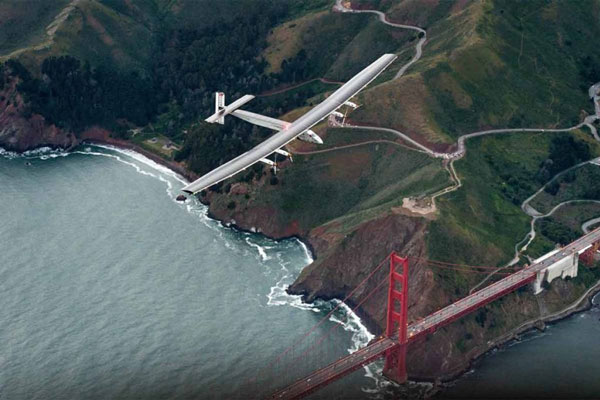The energy storage solution used consisted of Kokam Co., Ltd’s Ultra High Energy NMC batteries; based on lithium nickel manganese cobalt chemistry.
Solar Impulse featured four 38.5 kilowatt hour (kWh) of these battery packs that each contained 150 Ah cells.
Over the course of the 43,000 kilometres Solar Impulse traveled, much of the 11,000 kWh of electricity generated by the plane’s 17,000+ solar cells was stored in these battery packs; primarily to enable flight at night.
Kokam says its batteries feature an energy density of approximately 260 watts hours per kilogram (Wh/kg) and boast a 96 percent efficiency.
The company’s energy storage solution was also used in the first prototype, Solar Impulse 1, which was the first solar powered aircraft to fly between continents and across the continental USA. It was also the first solar plane to fly through an entire night; which occurred in 2010.
“What was critical was to get the lightest and most energy efficient solution, and we consequently selected Kokam’s Ultra High Energy NMC batteries, which has been our battery solution since the first flight of Solar Impulse 1 in December 2009 until the final leg landing of Solar Impulse 2 in Abu Dhabi in July 2016,” said André Borschberg; co-founder, CEO and pilot of Solar Impulse.
It wasn’t all smooth sailing (flying) for Solar Impulse 2 during its recent historic journey. During the 5-day and night record breaking flight from Nagoya, Japan to Hawaii, the temperature of the batteries increased to levels they weren’t designed for – close to 50C – and for an extended period. The temperature increase was the result of an unplanned change in flight profile and excessive insulation.
For safety reasons, the entire battery bank was replaced while in Hawaii. Various reports stated the original batteries were damaged, but later testing revealed they had only suffered minor loss of capacity – within the normal range of what the 2 year-old batteries would have experienced had the incident not occurred.
“The overheating problem was in no way related to any issue with Kokam’s batteries, which have delivered excellent performance for Solar Impulse 1 and on every leg of the flight with Solar Impulse 2, supporting our record-breaking circumnavigation of the globe,” said Mr. Borschberg.
As an added precautionary measure, a cooling system was added when the new batteries were installed, along with a manually operated cooling vent system. Battery cooling systems weren’t integrated from the get-go as every additional system can be another potential source of failure.
Kokam, headquartered in South Korea, started out as a polymer processing equipment manufacturer, then expanded to designing and manufacturing lithium-ion/polymer secondary batteries. According to the company, it commercialised the world’s first high capacity lithium polymer batteries, has 150 battery related patents and 650MWh of proven field performance.
Kokam has already made its presence known in Australia, with a 2 megawatt energy storage system housed in a 40 foot shipping container trialled by Powercor in Buninyong, south of Ballarat last year. It was Australia’s largest battery at the time.












Comments